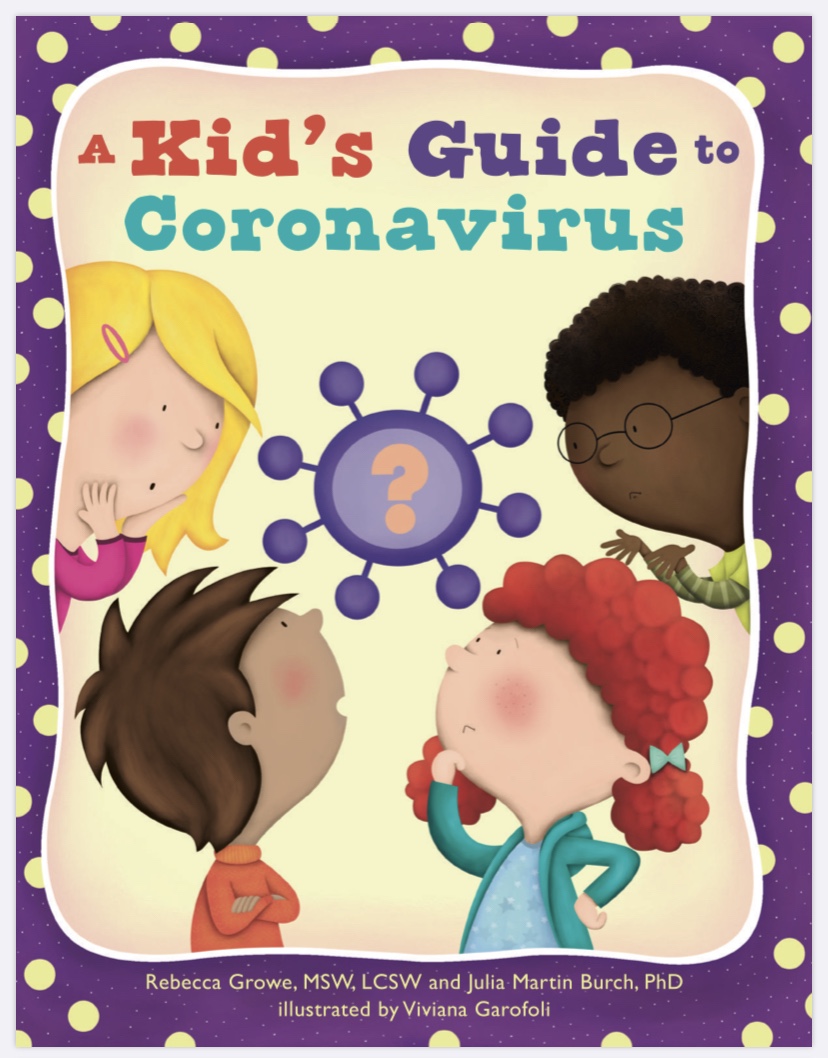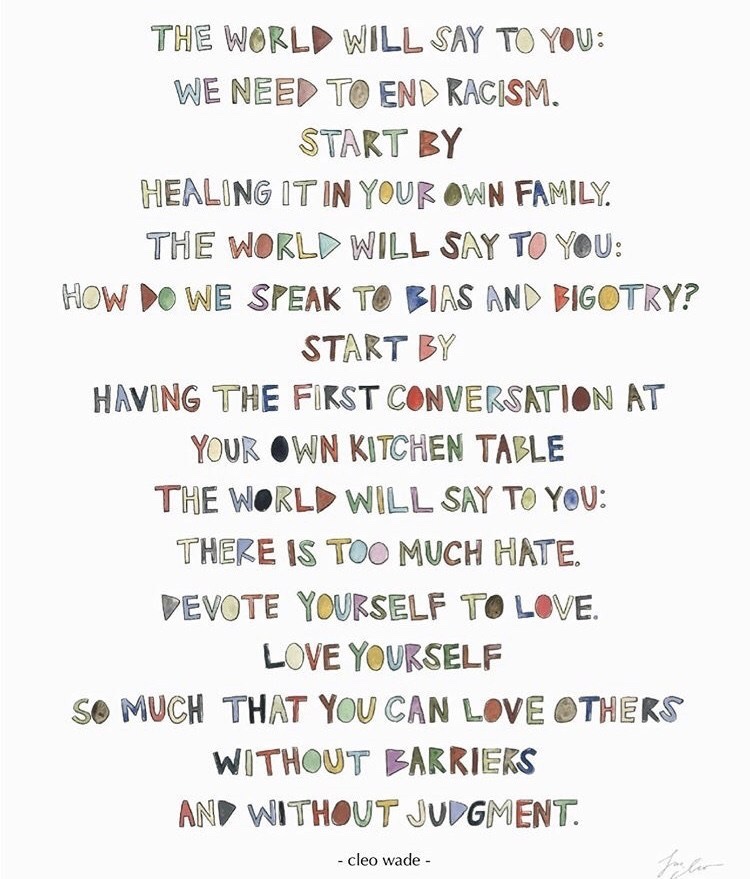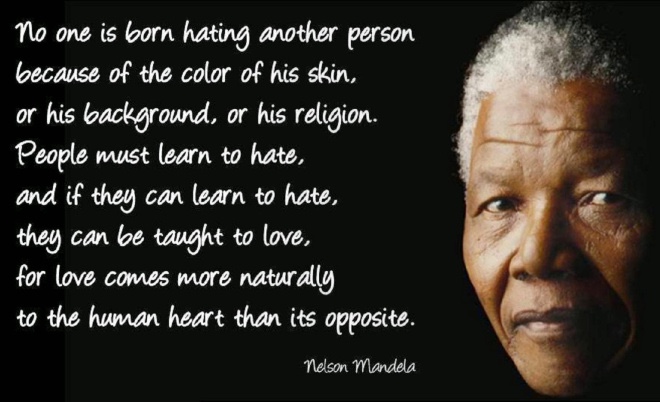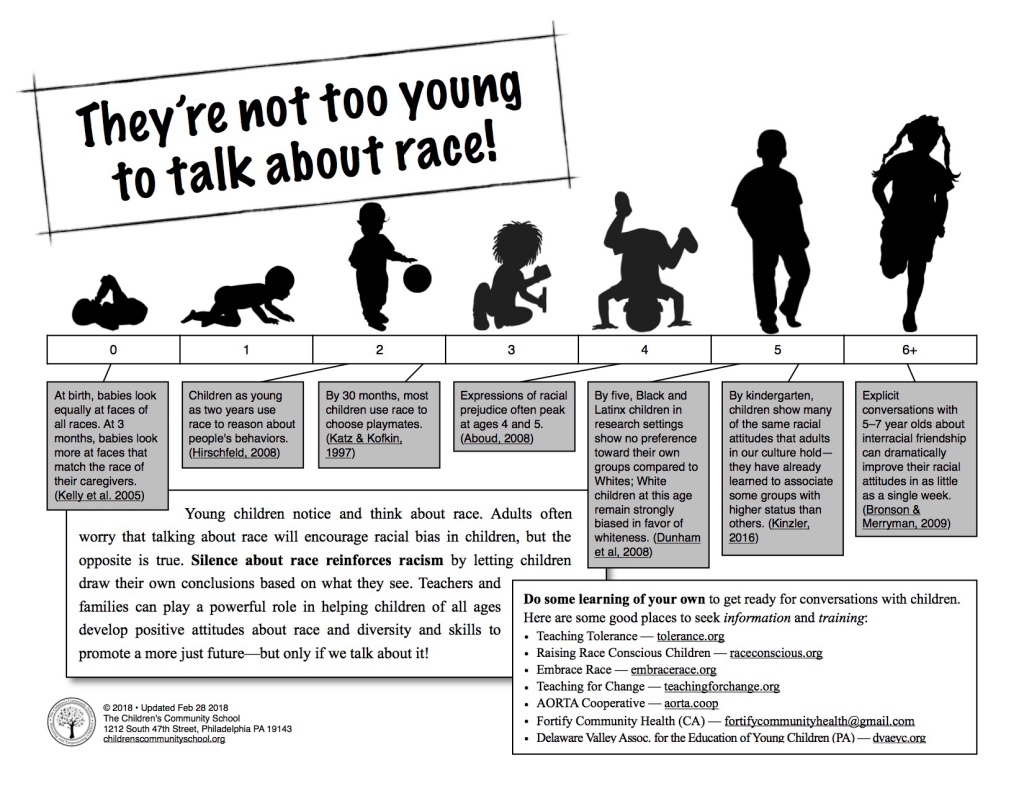 https://www.apa.org/pubs/magination/kids-guide-coronavirus-ebook.pdf
https://www.apa.org/pubs/magination/kids-guide-coronavirus-ebook.pdf
The APA posted this children’s book about COVID 19.
A Kid’s Guide to Coronavirus (PDF)
By
Rebecca Growe, MSW, LCSW and Julia Martin Burch, PhD illustrated by Viviana Garofoli
Magination Press • Washington, DC American Psychological Association
You probably already know a lot about different ways to be sick. You may know about colds, when you cough and sneeze a lot. You may know about strep throat, when it hurts to swallow, or ear infections, when your ear hurts inside.
What other ways to be sick do you know about?
Most sicknesses have been around for a long time. Scientists and doctors and all the grown-up helpers know just what to do to make people get better.
Can you think of some things that help people when they are sick?
This book is about a certain sickness. It’s called COVID-19, or coronavirus.
Have you heard of it?
Grown-ups have been talking about it a lot. You may have heard about it on TV or online.
What do you know about it already?
A lot of kids have questions about coronavirus. And without getting good answers, they might feel confused or even scared.
This book will help answer those questions!
This coronavirus is a new sickness. Grown-ups don’t know as much about it as they’d like. But here is what they do know:
Coronavirus is contagious. That means it can get people sick by moving from one person’s body to another person’s body when they touch or spend time close together. Coronavirus can move from you to someone else before you even start to feel sick.
Many people who get sick with coronavirus have a fever, a dry cough, and a little trouble breathing.
Anyone can get sick from coronavirus. It can cause big problems for older people or people who have other health issues.
Because coronavirus is such a new sickness, doctors and scientists are working really hard to learn how to help people get better and make coronavirus go away.
In fact, everyone can help out! You can do a lot to stop coronavirus from making people sick.
Can you think of any things you already do to make a difference?
You can wash your hands often with soap and water. Some people sing the ABCs while they do it—what about you?
You can also cover your coughs and sneezes with your elbow or a tissue and try not to touch your face a lot.
You can find fun ways to help, too.
Maybe you could paint a picture for your friend, or make a movie of your new dance moves to give Grandma a giggle.
You could write funny jokes on the sidewalk for your neighbors to see, or hang a sign in your window to brighten someone’s day.
Until scientists have found out how to make coronavirus go away for good, you and your family might have to make some other, bigger changes.
You might need to stay away from crowded places. This is because crowds make it easy for coronavirus to spread to more people and make them sick.
For the same reason, your parents might not work as much, or they might try to work from home. You might not be able to go to school or play with friends.
You might see people wear masks when they go outside. You might even get one of your own.
Super-heroes wear masks to protect their secret identities, right?
Now super-people everywhere are wearing masks to protect each other from coronavirus. Feel free to wear a cape, too!
These bigger changes can be hard.
What do you think some hard parts might be?
These bigger changes can be kind of nice.
What do you think some nice parts might be?
You should know that these bigger changes are temporary. That means they will not last forever.
Other things are staying exactly the same! Your grown-ups are still in charge of taking care of you. And it is still your job to be a kid, which means you still need to learn, play, and spend time with family.
What else is staying the same?
And if you ever have questions, or want to talk, your grown-ups are here to help you and to listen.
No sickness can ever change that!
The coronavirus pandemic can be frightening and confusing for children and adults alike. As a parent or caregiver, you have the challenging task of navigating and managing your own emotions and needs during the crisis while also supporting your child. The following tips offer information and concrete strategies that you can start using right away with your child and on your own.
Provide Just Enough Information
It is natural for children to be curious about
the new kind of illness they keep hearing adults discuss. Provide your young child with limited, age-appropriate facts about the virus. Focus on what they can do to keep themselves, their families, and their communities safe.
The information covered in this book is an appropriate example of how to talk with young children about the virus. Listen respectfully to their concerns and reassure them without being dismissive. Help them focus on what is in their control, such as social distancing and hand hygiene. Emphasize that it’s important they still do their “jobs” as a kid, including learning, playing, and spending time with family.
It is important to try to strike a balance between oversharing information, which may lead kids to worry about facets of the crisis they do not need to be concerned about, such as the economy, and under-sharing. Though parents sometimes withhold information from kids with the noble intention of wanting to spare them distress, too little information can send active
imaginations into overdrive, leading kids to concoct far scarier outcomes than what’s realistic.
Validate and Name Emotions
It is normal for children to have a range of emotions in response to the pandemic. Some children might feel anxious about the unknown and fearful about their safety. Others will feel sad or angry about canceled events like a vacation, or about losing their normal routine and time with teachers and friends. No matter the emotion, it is important to validate it, or in other words, to communicate to your child that their emotion makes sense and is okay for them to feel. For example, you might say, “It makes sense that you are feeling disappointed about missing your class field trip. You were really looking forward to it.” Or, “I can understand why you’re feeling worried. There are a lot of changes happening right now.” It is also helpful to specifically label the emotion your child is feeling; research demonstrates that naming an emotion decreases its intensity. In a difficult moment, taking the time to say, “I see that you are really sad” can be incredibly soothing to your child.
Parents sometimes try to make their children feel better by pointing out that the child has many privileges, and that other people are suffering more. For example, a parent might say, “Don’t feel sad about missing vacation! We’re lucky to have somewhere to live. Other kids aren’t that lucky.” Despite the good intentions, this is not a helpful approach, as it confuses children about why they are feeling what they are feeling. It can also lead them to feel ashamed for feeling sad about missing vacation. If you would like to teach your child to reflect on what they have to be grateful for, make a family practice of writing down “gratitudes” or discussing what you are each thankful for over dinner. By doing this when your child is calm rather than feeling sad or fearful, you teach them that their “gratitudes” are things to feel uncomplicated joy about, rather than guilt or confusion.
Focus on the Present Moment
Worried brains tend to focus on the future, predicting all of the scary things that might happen. Teach your child how to gently bring their mind back to the present moment by practicing mindfulness. Being mindful simply means that you are purposefully paying attention to the present moment without judging it as good or bad. Mindfulness can be practiced in countless kid-friendly ways. For example, you can play a mindful “I spy” in which you count all of the objects of a certain color in the space around you. You can mindfully eat, dance, walk, listen to music – the sky is the limit! Build times into the day to practice, such as in transition periods or at meals.
Create a New Routine
It can feel next to impossible to maintain a routine during the quarantine. Yet, flexibly following a consistent plan day-to-day provides much-needed stability for your young child. This is particularly important given that their world has changed dramatically in a short time. Routines do not have to be complicated. For example, it can be helpful to just structure the day around basic needs such as wake-up times and bedtimes, meals, and periods in which you get active. Constructing a routine around these building blocks of physical and mental health makes it more likely that they will occur consistently.
Consider giving your child age-appropriate tasks to help the family, such as setting the table, helping to prepare food, or cleaning up after a meal. Though teaching your child a new skill takes more effort and attention in the short term, it will make your life easier (and increase your child’s level of independence and sense of competence) in the long term.
Create Memories
Look for opportunities to create new, special family rituals. These do not have to be time consuming or involve preparation. For example, you can jump-start your days with a family dance party in which a different family member chooses a song each day and everyone dances around the breakfast table. You might also help your children brainstorm ways that they can give back to their community, such as writing cards for the elderly or creating supportive signs for health-care workers. When your children look back on this time, they will remember that, despite the many challenges, the time at home also allowed your family to create memories together.
Put the Oxygen Mask on Yourself First
Whenever you can, pause and take a moment or two to check in on yourself and your emotions.
Just like your child, you will reduce your own emotional intensity by noticing and labeling your feelings. During a crisis, this kind of self-attention can feel like the last thing a busy parent or caregiver has time for. However, by ensuring that you are attuned to and taking care of your own needs, you will have reserves available to help support your children during difficult moments. You will be grateful that you preemptively invested the time in yourself when you must draw on these reserves to help a struggling child.
Make a point to practice what you preach with your children. Focus on what is in your control, such as practicing and modeling coping skills, limiting news consumption, and creating your own new routines around sleep, nutrition, and exercise. Most important–validate and be gentle with yourself. It is impossible to perfectly fulfill all of the roles you are being asked to play in this moment in time. Get comfortable with being good enough. This may look like allowing your children more time on screens than you would normally, cooking (or just heating up!) very basic meals, or practicing a coping strategy for two minutes while hiding in the bathroom.
When to Seek Help
If your child is experiencing so much anxiety or sadness about COVID-19 that it causes significant distress or begins to impact their functioning (e.g., consistent trouble sleeping, eating, or engaging in typical life activities), you should consult with a licensed psychologist or other mental health professional. There is no need to wait until social distancing restrictions are lifted. During the current crisis, many mental health providers are offering therapy over virtual meeting platforms. The COVID-19 pandemic has created unprecedented challenges for children and adults alike. Yet within great challenges lie opportunities for growth, bravery, and resilience. You are taking a concrete, effective step forward simply by taking the time to read this book and reflect on how to help your child. Remind yourself of this whenever the “not good enough” monster strikes. You are doing the best you can, and that is enough.
Rebecca Growe, MSW, LCSW, is a clinical social worker with a private practice. She specializes in treating child and adolescent anxiety disorders, disruptive behavior, and traumatic stress. She lives in St. Louis, Missouri.
Visit http://www.growecounseling.com
Viviana Garofoli earned her degree in fine arts in 1995, and since then has dedicated her time to illustrating children’s books. She has illustrated over 20 children’s books and contributed to many editorial and textbook illustrations around the world. She lives in Buenos Aires.
@vivi_garofoli
Julia Martin Burch, PhD, is a staff psychologist at the McLean Anxiety Mastery Program at McLean Hospital in Boston. Dr. Martin Burch completed her training at Fairleigh Dickinson University and Massachusetts General Hospital/Harvard Medical School. She works with children, teens, and parents and specializes in cognitive behavioral therapy
for anxiety, obsessive-compulsive disorder, and related disorders. Outside of her work at McLean, Dr. Martin Burch gives talks to clinicians, parent groups, and schools on working with anxious youth.
Magination Press is the children’s book imprint of the American Psychological Association. APA works to advance psychology as a science and profession and as a means of promoting health and human welfare. Magination Press books reach young readers and their parents and caregivers to make navigating life’s challenges a little easier. It’s the combined power of psychology and literature that makes a Magination Press book special.
Visit maginationpress.org @MaginationPress
Copyright © 2020 by Magination Press, an imprint of the American Psychological Association. Illustrations © 2020 by Viviana Garofoli. All rights reserved. Except as permitted under the United States Copyright Act of 1976, no part of this publication may be reproduced or distributed in any form or by any means, or stored in a database or retrieval system,
without the prior written permission of the publisher. Permission is granted to download and print or reproduce for personal, educational, and non-commercial use only.
Magination Press is a registered trademark of the American Psychological Association. Order books at maginationpress.org or call 1-800-374-2721.
Book design by Rachel Ross
eISBN: 978-1-4338-3415-8







 Anger –
Anger – 
















